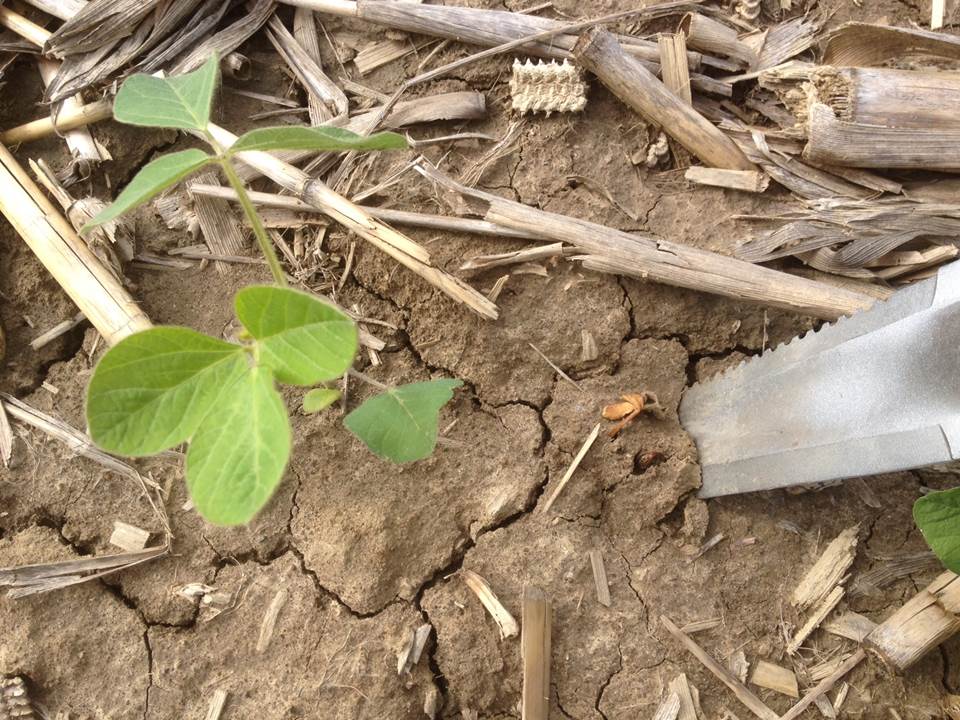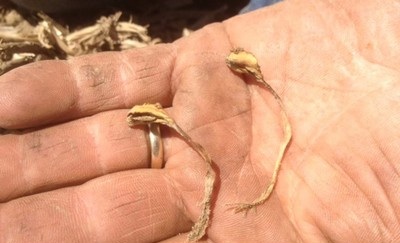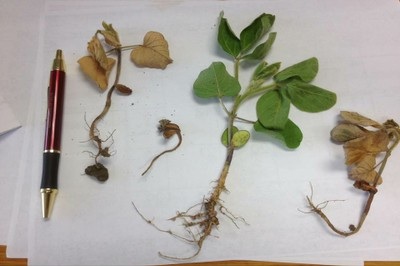Several reports from fields in parts of the state with repeated saturating rains are reporting high amounts of damping-off of soybean or corn. Symptoms of damping-off at this time of year will appear as random skips of 1 to a few plants in a row. The difference between this and the insects is that you will be able to find the dying or dead seedling. It will appear brown, shrunken and distorted. Possible causes include primarily the oomycetes Pythium and/or Phytophthora sojae.
 Symptoms of damping off in V1-V2 soybeans. (Source: Eric Richer, OSUE Fulton) |
 Damping off at soybean emergence (VE). (Source: Eric Richer, OSUE Fulton) |
 Phytopthora sojae symptoms during soybean development. (Source: Eric Richer, OSUE Fulton) |
Flooding injury is different. When plants are submerged for more than 48 hours, this creates the condition called anoxia where the oxygen is depleted and carbon dioxide builds up. When you walk in a field that has been flooded, it smells like an old swamp or your kids soccer shin guards, or other items left in sports bags – bad. When you dig up the roots with a shovel and separate the clay from the roots, for flooding they will be gray to translucent in color, and the outer covering (epidermal cells) can be pulled off the plant leaving the white root stele (vascular tissue).
Before you put the planter away, check the stands to be sure that there is a good stand and plants are past the unifoliate stage. For some of these soilborne pathogens, particularly Phytophthora sojae, once the plant is at the V1 (first full trifoliate is expanded), the plants resistance should be able to take over. However, as we routinely find on our susceptible check varieties, stem rot can develop this early in the season.
We tend to find the most stem rot, late seedling damping-off about 1 week after a soil saturating rain. Symptoms again are dying plants randomly spaced around the field. Remember for most of Ohio, the Rps genes just don’t provide protection. So from the V1 growth stage on, we are dependent on the partial resistance component of the resistance package in the variety.
If you are finding stem rot, go back to the variety description and double check. For next year, pick a variety with a better score for that field. Note that each company uses a different score but most are on the 1 to 9 scale. You need to know what 1 is – the best or dead before beginning to decipher what you need.





